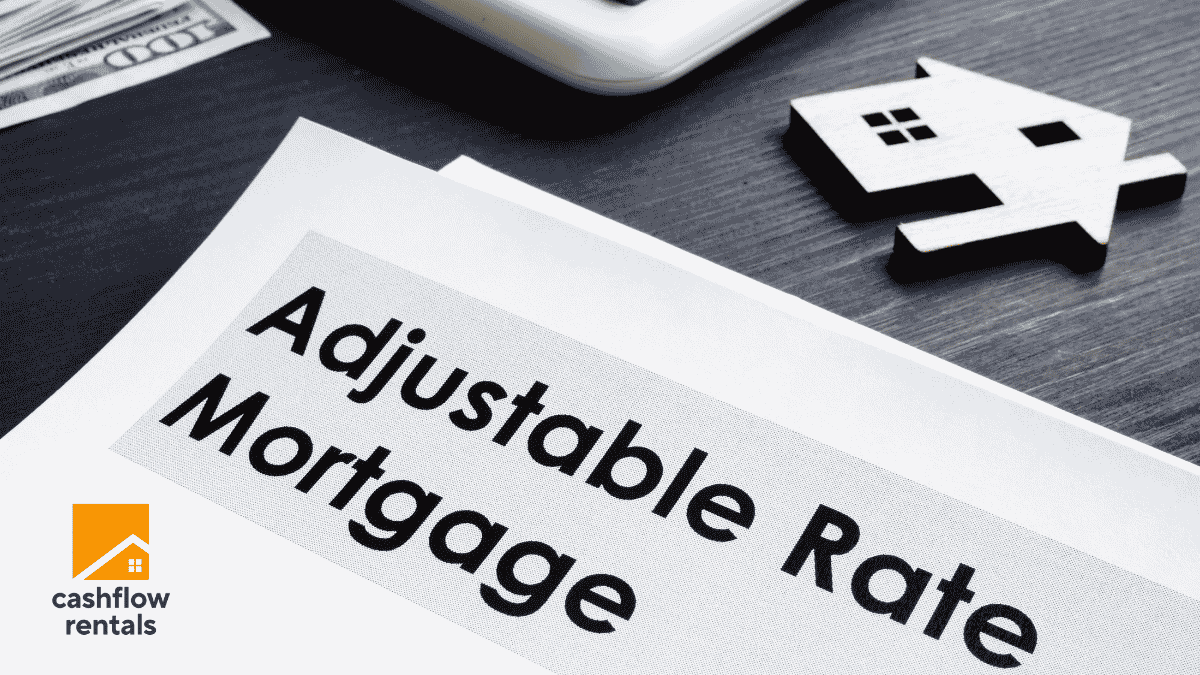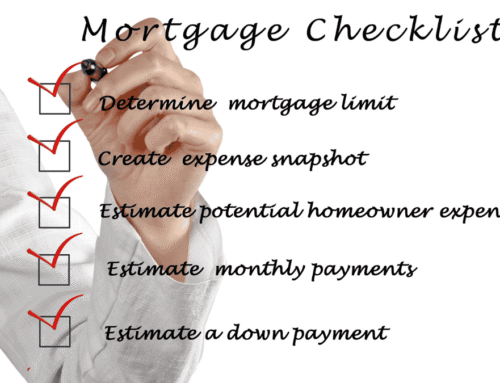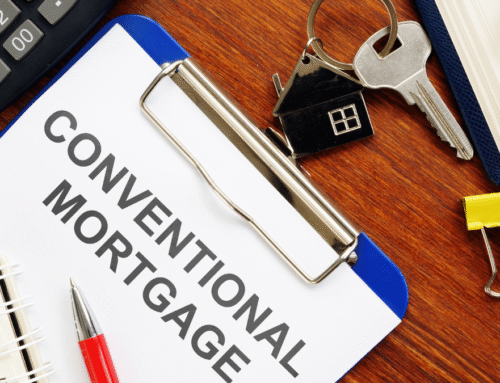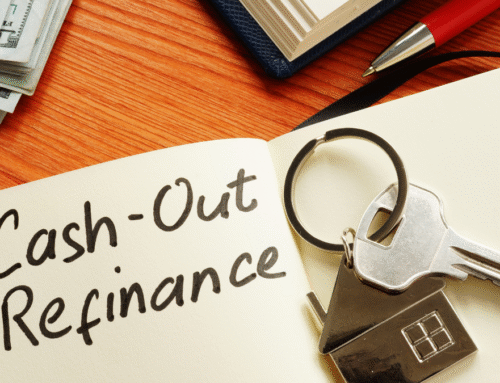DSCR ARM vs Fixed: Choosing the Right Tool for the Job (2025 Guide)
DSCR ARM vs Fixed — Why This Choice Matters in 2025
Updated:
I’ve built a 120+ door U.S. rental portfolio and I’ve used both fixed-rate DSCR loans and ARMs (5/6, 7/6, 10/6). The loan structure you choose to fund your rental property investment can have a significant impact on your monthly payment, cash flow, and the rates and terms you get offered. It can even make a difference as to whether the deal qualifies at all.
In this guide I’ll show you where ARMs shine, where a 30-year fixed wins, and how caps, margins, and prepayment terms affect your real cost over the first 3 to 10 years.
Plain-English goal: you’ll learn how to choose the DSCR loan structure that maximizes approval odds and cash flow without getting trapped by resets or prepay penalties that clash with your hold plan.
JOIN MY VIP PRIORITY INVESTOR LIST
Get the Best DSCR Loan Deals and Off-Market DSCR-Ready Investment Properties in Your Inbox Every WeekYES! ADD ME TO THE PRIORITY INVESTOR LIST
Definitions & Key Terms for ARM DSCR Loans: Index, Margin, Caps, Floors
SOFR (index): This is the reference rate most DSCR ARMs use. Your fully indexed rate on reset is index + margin (subject to caps/floors). For 5/6, 7/6, 10/6 ARMs the index updates every 6 months after the initial fixed period. Reference: SOFR rates.
Margin: This is a fixed spread between the index and your actual interest rate (e.g., 3.00%). It is added to the index to set your new rate at each adjustment. For example, if the index rate is 4.50%, and the spread is 2.50%, your interest rate will be 7.00% (4.50 + 2.50).
Caps: This is a limit on how much your rate can increase. Common patterns include an initial cap (first rate reset), periodic cap (each subsequent reset), and a lifetime cap (maximum over the note rate). This offers you some protection from an unexpected spike in the index rate. Exact values vary between DSCR lenders and loan programs.
Floor: This is the lowest rate allowed on the note. This offers some protection for the lender, and it is often equal to the margin or a stated floor.
Initial fixed period: The interest rate on an ARM DSCR mortgage is fixed for 5, 7, or 10 years (for 5/6, 7/6, 10/6 ARMs). After that, the rate adjusts every 6 months.
Qualifying rate: Lenders may qualify your DSCR at the higher of the note rate or fully indexed rate (or a program floor). you should confirm this with your lender or broker ahead of time as it affects approval and the max proceeds from a DSCR cash out refinance.
Interest-Only (IO): Some ARMs (and some fixed rate DSCR loans) offer 5 to 10 years of IO. IO lowers your PITIA (monthly payment), and can improve the DSCR ratio. That could help a property to qualify, and/or get you better terms. But remember that the monthly payment will increase when amortization begins.
| Factor | What It Means | Typical / Example |
|---|---|---|
| Index | Reference rate used at each reset. | SOFR-based (varies by program). |
| Margin | Fixed spread added to the index. | ~2.75% to 3.50% (program-dependent). |
| Cap structure | Initial / periodic / lifetime movement limits. | e.g., 2 / 1 / 5 (illustrative only). |
| Floor | Minimum allowed note rate. | Often = margin or stated floor. |
| Reset frequency | How often the rate can change after fixed period. | Every 6 months (5/6, 7/6, 10/6 ARMs). |
| IO option | Interest-only period before amortization. | 5–10 years IO on many programs. |
Pro Tip: When you request quotes or seek a pre-approval, ask lenders to include: index used, margin, cap table (initial/periodic/lifetime), floor, prepayment terms, and the qualifying rate they will use for DSCR. Use my DSCR Calculators to model different loan structure, learn how to improve your DSCR, and refer to my DSCR pre-approval checklist.
Side‑by‑Side Payment Scenarios: Fixed vs 5/6 ARM (with/without IO)
As I mentioned, I’ve used almost all types of DSCR loans over the last ten years. We also use DSCR funding almost exclusively when we’re acquiring turnkey investment properties for our clients. Different deals benefit from different financing strategies, and the value is in the nuance.
Here’s a simple, apples‑to‑apples comparison of how your monthly payment (ergo, cash flow), and DSCR (better DSCR = better rates) can change with different loan structures. These are illustrative numbers to show relative effects; use my DSCR calculator to model different scenarios for your own rental property.
Assumptions (illustrative): I’ll use a DSCR loan of $250,000; 30‑yr term; taxes+insurance+HOA = $350/mo; rent = $2,200/mo; fixed rate 7.25%; 5/6 ARM start 6.75%; IO option available.
| Structure | Start Rate | Monthly P&I / IO | PITIA | Resulting DSCR |
|---|---|---|---|---|
| 30‑yr Fixed (Amortizing) | ~7.25% | $1,705.44 | $2,055.44 | 1.07× |
| 5/6 ARM (Amortizing) | ~6.75% | $1,621.50 | $1,971.50 | 1.12× |
| 5/6 ARM (Interest‑Only) | ~6.75% | $1,406.25 | $1,756.25 | 1.25× |
Note: Lower payments can help a borderline deal pass DSCR and may improve pricing tiers. But ARMs/IO add reset risk and later payment jumps. We’ll model those next under caps, margins, and floors.
The biggest consideration here is that the interest rate of your ARM mortgage will reset after the initial fixed rate period. If rates go up, that could have a significant impact on your cash flow. On a $250,000 mortgage, your P&I payment would increase by $169.53 if interest rates reset just 1% higher than your initial fixed rate. You should carefully consider this when you’re underwriting the deal by stress testing for future rate rises.
How Caps & Margins Change Future Payments (Math You Can Verify)
As I already mentioned above, on a SOFR ARM DSCR loan, your fully indexed rate at reset is index + margin, but caps limit how fast the interest rate can rise. Here’s a simple, illustrative setup and the payment impact you can sanity-check.
| Term | Note Rate / Inputs | Cap Table | Floor |
|---|---|---|---|
| 5/6 ARM (initial 5 yrs fixed) | Start 6.75%; Margin 3.00% | 2 / 1 / 5 (initial / periodic / lifetime) | Often equal to margin (e.g., 3.00%) |
| When | Rate Applied | Monthly P&I | PITIA | Resulting DSCR |
|---|---|---|---|---|
| During fixed period | 6.75% | $1,945.79 | $2,295.79 | 1.00× |
| 1st reset (after 5 yrs) | 7.75% (index+margin within +2% cap) | $2,149.24 | $2,499.24 | 0.92× |
| 2nd reset (6 mos later) | 8.75% (periodic +1% cap, illustrative) | $2,360.10 | $2,710.10 | 0.85× |
Takeaway: Caps slow the speed of increases, not the direction. If/when your PITIA goes up, it could decimate your cash flow. Always model: start rate, fully indexed rate (index + margin), and cap table against your property’s rent and PITIA. Don’t rely on a potential refinance after the initial fixed rate period ends, you don’t know what interest rates might be then.
Notes: Scenarios are educational and illustrative—not quotes or advice. Programs, indices, caps, floors, and qualifying rules vary by lender and state.
Prepayment Structures & Exit Planning
This is an area I see investors overlook a lot. The prepayment clause in your DSCR loan agreement can be the most expensive line you never read. DSCR loans often use a step‑down penalty (e.g., 5‑4‑3‑2‑1) that applies to both sale and refinance during the early years. Some programs offer shorter step‑downs, no‑prepay options (with a rate premium), or a minimum‑interest/make‑whole variant. Your goal is to match the prepay to your hold plan so you’re not paying to exit early.
| Structure | Typical Pattern | Pros | Watch‑outs | Best For |
|---|---|---|---|---|
| Step‑down (long) | 5‑4‑3‑2‑1 (years 1 to 5) | Usually best rate/price; allows ~20% annual curtailment (making extra payments) without penalty. | Expensive to exit in first 2 to 3 years; applies to sale/refi. | Long‑term holds (7 to 10+ yrs) where early exit is unlikely. |
| Step‑down (short) | 3‑2‑1 (years 1 to 3) or 2‑1 | More flexibility to refi/sell earlier. | Slightly higher rate than 5‑year step‑down. | Medium‑term plans (2 to 5 yrs) or value‑add to refi sooner. |
| No‑prepay option | 0% from day one | Maximum flexibility; no fee to exit. | Rate premium vs step‑down; not always available on every program. | Uncertain hold horizon; likely refi in < 24 months. |
| Minimum‑interest / Make‑whole | Pay a fixed months of interest if exiting early (e.g., 6 to 12 mos) | Sometimes better than large step‑down if exit is very early. | Complex math; can be costly if rates drop and you refi mid‑term. | Bridge‑style needs; planned quick refi when stabilization occurs. |
Quick plan fit: If you expect to sell or refinance within 18 to 36 months, look for a shorter step‑down or no‑prepay and compare the higher rate vs the expected penalty. For 7 to 10+ year holds, a 5‑year step‑down often wins on rate/cash flow.
How to compare: Calculate the penalty in dollars at your likely exit date, then run a break‑even vs the incremental interest cost of a higher‑rate/no‑prepay option. Choose the lower total‑cost path that still gets your deal approved today.
Qualifying Rate Rules (How Lenders Underwrite ARMs vs Fixed)
Why this matters: Your DSCR approval and/or max proceeds from a cash out refinance depend on which qualifying rate the lender uses. Many programs qualify at the higher of (a) the initial note rate, (b) the fully indexed rate (index + margin), or (c) a program floor. Interest‑only (IO) structures are often qualified using the amortizing payment, not the IO payment.
| Product | Qualifying Rate Used | Payment Used for DSCR | Common Effect |
|---|---|---|---|
| 30‑yr Fixed (Amortizing) | Note rate or program floor (whichever is higher). | Amortizing P&I + T&I + HOA. | Predictable; easier to model; DSCR tied to quoted rate. |
| 5/6, 7/6, 10/6 ARM (Amortizing) | Higher of: note rate, fully indexed (SOFR + margin), or floor. | Amortizing P&I + T&I + HOA. | Can reduce proceeds if the fully indexed rate > note rate. |
| ARM with Interest‑Only | Same as above (often higher of note/index+margin/floor). | Amortizing payment typically used for DSCR test (not IO). | IO helps actual cash flow, but may not boost approval DSCR. |
Quick example: Quoted 5/6 ARM note rate = 6.75%. Margin = 3.00%, current SOFR proxy = 4.0% → fully indexed = 7.00%. If the program qualifies at the higher of note vs fully indexed, the underwriter uses 7.00% to compute P&I for DSCR. That can reduce max LTV or cash out proceeds compared with qualifying at 6.75%.
- Ask explicitly: “What qualifying rate will you use for DSCR?” Get it in the quote: index source, margin, cap table, and any floor.
- Model both ways: In your spreadsheet or calculator, test note‑rate vs fully indexed P&I to see sensitivity on DSCR and proceeds.
- Foreign‑national overlay: Some programs add reserve requirements (e.g., 6 to 12 months PITIA) or DSCR floors (e.g., ≥1.10–1.20×).
Decision Matrix — When Fixed vs ARM vs IO
Choosing the right DSCR loan structure involves careful consideration of the deal specifics, your short and long-term plans for the property, the DSCR ratio, your intended hold period, your thoughts on future interest rates, and the prepayment penalties. Don’t just plump for the lowest rate, consider your overall plan, and choose a financing strategy that align with your goals.
How to use this: Match your hold plan, cash-flow needs, and rate view to a loan structure. Then sanity-check the prepayment terms against your likely exit and/or refinancing strategy.
| Scenario | What You Value | Typical Best Fit | Prepay to Target |
|---|---|---|---|
| Long-term hold (10+ yrs), steady cash flow | Payment certainty; minimal reset risk | 30-yr fixed (amortizing) | 5-4-3-2-1 (OK if you plan to hold) |
| Medium hold (3 to 7 yrs), plan to refi/sell | Lower start rate; better early cash flow | 5/6 or 7/6 ARM (amortizing) | 3-2-1 or priced no-prepay if exits are likely |
| Tight DSCR at acquisition | Maximize DSCR / approval odds | ARM + Interest-Only (5–10 yrs IO) | 3-year step-down (or no-prepay) to keep flexibility |
| Expect rates to fall in 2 to 3 yrs | Lower start today; refi optionality | 5/6 ARM with clear cap table (e.g., 2/1/5) | Shorter step-down or no-prepay to refi sooner |
| Expect rates to rise / want simplicity | Hedge against future increases | 30-yr fixed (amortizing or IO-to-fixed) | Any (prepay less relevant if truly long hold) |
| Foreign National | Approval + manageable payment | 30-yr fixed foreign national DSCR loan | 3 to 5-year step-down |
| Cash-flow first 5 yrs (value-add, lease-up, slow BRRRR) | Lowest early payment | IO (5 to 10 yrs) on fixed or ARM | Match to project timeline; avoid hard minimum-interest |
Rule of thumb: Don’t pick your loan structure in isolation. Request two same-day quotes (fixed vs ARM ± IO) with the cap table, margin, floor, and prepay disclosed, then model both in my DSCR calculators.
Note: Availability and pricing vary by lender, state, property type (SFR/2–4/5+), and borrower profile (U.S. vs foreign-national).
Foreign-National Overlays — What Changes vs U.S. Borrowers
Most of the clients I deal with are non-residents buying rental properties in the U.S.. While we use DSCR loans for almost all of our client acquisitions, there are some extra considerations. I have a lot of conversations with overseas investors who assume they’ll get similar rates and terms as U.S. citizens, or that they can leverage their home-country credit score. The reality is, that’s not the case. A foreign national DSCR loan will usually have a lower LTV cap, and slightly higher interest rate, and lenders won’t even consider credit. These are important considerations for purchase loans, but also for refinancing in the future.
Big picture: You can absolutely use DSCR loans as a non-U.S. borrower, but expect extra KYC/OFAC checks, higher reserve requirements, and modest pricing/LTV overlays. Here’s what typically shifts.
| Factor | Foreign-National (Typical) | Notes |
|---|---|---|
| Max LTV | ~70% purchase; ~65–70% cash-out | Program and state-dependent; STRs/condos may price tighter. |
| DSCR Floor | ~1.00 to 1.25× common | Higher DSCR tiers improve pricing and proceeds from cash outs. |
| Reserves | ~6 to 12 months PITIA (sometimes more) | Higher for jumbo balances, STRs, or 5+ units. |
| Pricing Uplift | ~+0.25% to +1.00% rate | Varies by KYC profile, loan size, LTV, and DSCR. |
| Credit | U.S. credit not required | No-U.S. credit OK with many DSCR lenders. |
| Entity Vesting | LLC/LP allowed | Personal guarantees might be required, and BOI/KYC disclosures are standard. |
| Seasoning | 3 to 12 months title/value typical | AV cash-out most available ≥6 to 12 months; earlier refis often cost-basis-capped. |
| Docs | Passport/visa, proof of address, source-of-funds | 90 to 120 days bank statements, lease/1007, entity docs, EIN if applicable. |
Quick tip: Quote both fixed and 5/6 ARM ± IO on the same day and ask lenders to disclose the cap table, margin, floor, and qualifying rate. Higher DSCR tiers can offset foreign-national pricing—model scenarios in the DSCR calculators.
Note: Overlays vary by lender and state. Business-purpose DSCR loans are for investment property only (not owner-occupied).
Quote Checklist — What to Ask Every Lender (Same-Day Apples-to-Apples)
Goal: Don’t jump look for one quote on one loan type from one lender. Get fully itemized quotes on the same day so you can compare fixed vs 5/6 ARM (± IO) on equal footing. When you speak to your lender or broker, ask for everything below in one email and save the PDF/term sheet.
| Category | Exact Details to Request |
|---|---|
| Loan Type(s) | Quote both 30-yr fixed (amort) and 5/6 ARM (amort and IO variant), same property & rate lock day. |
| Rate & Points | Note the rate, total points (incl. buydown), lender/origination fee; confirm the rate lock length and extension cost. |
| ARM Mechanics | Index rate used (usually SOFR), margin, cap table (initial/periodic/lifetime), floor, and rounding rule. |
| Qualifying Rate | State whether DSCR is qualified at note rate, fully indexed rate, or program floor; share the exact calculation used. |
| Payment Structure | Amortization term; IO years (if any); monthly escrow requirements (T&I/HOA) and estimated amounts. |
| Max LTV / DSCR Tiers | Maximum LTV by DSCR band; pricing hits/credits for DSCR ≥1.25× vs ~1.00–1.15×; STR/condo overlays if relevant. |
| Prepayment | Step-down schedule (e.g., 5-4-3-2-1 or 3-2-1), free curtailment allowance, and any make-whole/min-interest language. |
| Reserves & Docs | Months of PITIA in reserves; required KYC/OFAC docs; lease/1007 requirements; STR addenda if applicable. |
| Timing & Fees | Turn times (UW/appraisal/close), third-party fees (appraisal, title, legal), rate-lock deposit or float-down options. |
Copy-paste quote prompt: “Please quote 30-yr fixed amortized and 5/6 ARM (amort + IO) for the same property today. Include index, margin, caps (init/periodic/lifetime), floor, qualifying rate, LTV by DSCR tier, full fee itemization, prepayment terms, required reserves, and lock terms.”
Tip: Collect at least two quotes on the same day and drop the numbers into my DSCR calculators to compare PITIA, DSCR, and breakeven on any points buydown.
Final Thoughts
Choosing the right financing strategy for your rental property deserves just as much consideration as your overall investment strategy, the market you’re buying in, or even the property you’re buying. Don’t just grab the lowest possible rate. Instead, consider all of the factors; the property’s cash flow, your intended hold period, current interest rates, and your thoughts on future interest rates.
If you’re looking for long-term consistency, a 30-year fixed rate DSCR loan might be the best option. If you intend to sell or refinance in 5 to 10 years, or you think interest rates might head lower, then an ARM mortgage might be more appropriate. Choosing the right tool for the job will align your financing with your overall investing strategy and goals, and set you up for long-term success.
GET PRE-APPROVED FOR THE BEST DSCR LOAN RATE
Start your real estate investment journey today, and get pre-approved for the Best DSCR Loan Interest Rates from market leading lenders!
“Having personally invested in over 120 US rental properties from overseas, I know the true value of getting the right advice and support.
David Garner – Cashflow Rentals

GET PRE-APPROVED FOR THE BEST DSCR LOAN INTEREST RATES TODAY!
Start your real estate investment journey today get pre-approved for the best DSCR loan interest rates from market leading lenders!
“Having personally invested in over 120 US rental properties from overseas, I know the true value of getting the right advice and support.
David Garner – Cashflow Rentals
DSCR ARM vs Fixed — FAQs
Is a 5/6 SOFR ARM riskier than a 30-year fixed DSCR loan?
It can be—after the fixed period. ARMs often start with a lower rate and payment, which may improve DSCR and approval odds. But once the rate resets (every 6 months), your payment can rise within the cap limits. Match the ARM term to your realistic refi/sale timeline.
How do ARM caps actually protect me?
Caps limit rate jumps at the first reset (initial cap), each subsequent reset (periodic cap), and over the life of the loan (lifetime cap). Ask lenders to disclose the full cap table (e.g., 2/1/5) and model worst-case payment so you’re not surprised later.
When does interest-only (IO) make sense?
When DSCR is tight or cash flow matters early, IO can lower PITIA for 5–10 years, increasing approval odds and cash cushions. Trade-off: your balance doesn’t amortize during IO, and the payment steps up when amortization begins.
How should I compare lender quotes fairly?
Use a same-day RFQ and require the index, margin, cap table, floor, prepay, points, and lender/broker fees on the same scenario. Compare APR-style cost over your expected hold period, not just the note rate.
Will choosing an ARM hurt resale or future refi?
Generally no, if you plan ahead. An ARM can help you qualify today and improve cash flow. Just track prepay windows and rate caps, and set calendar reminders to evaluate a refi well before the first or second reset.












